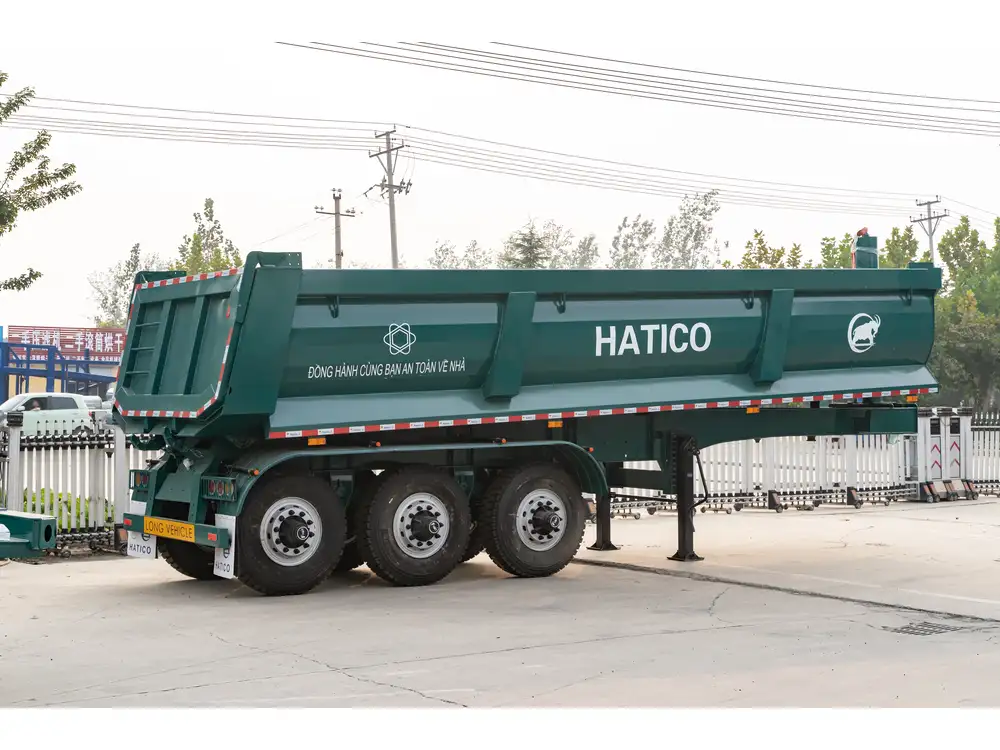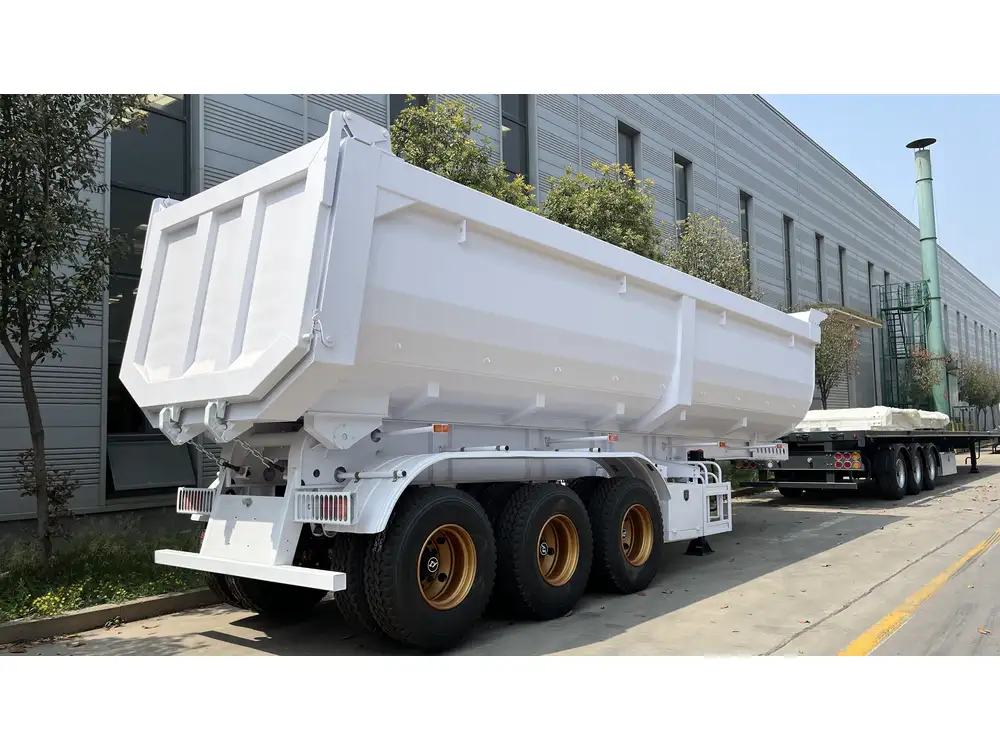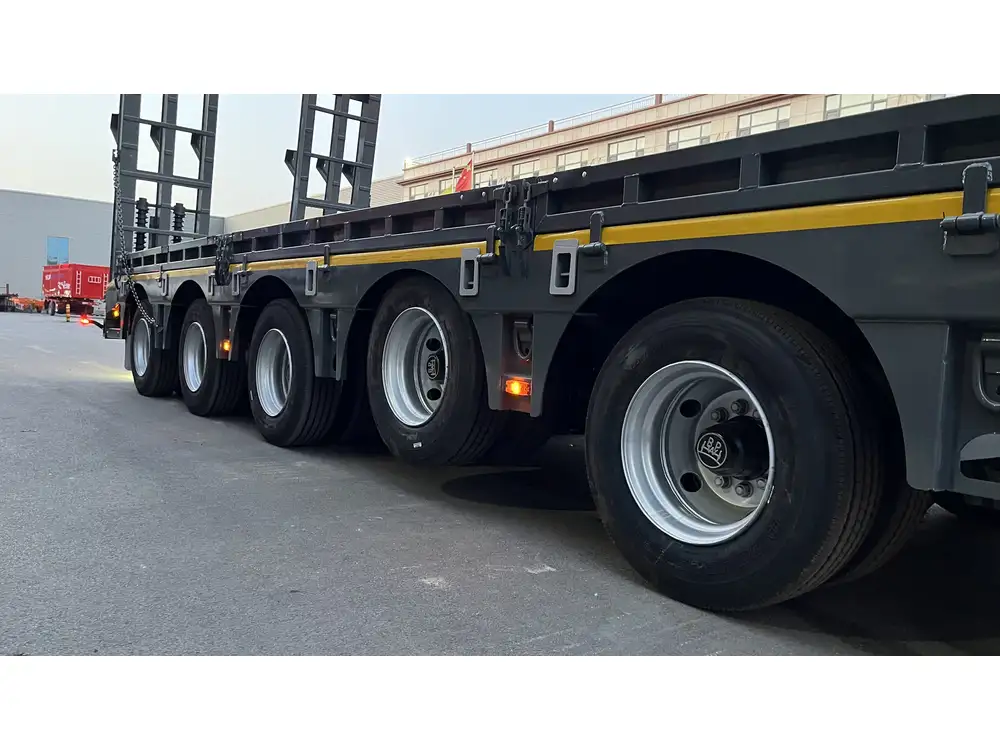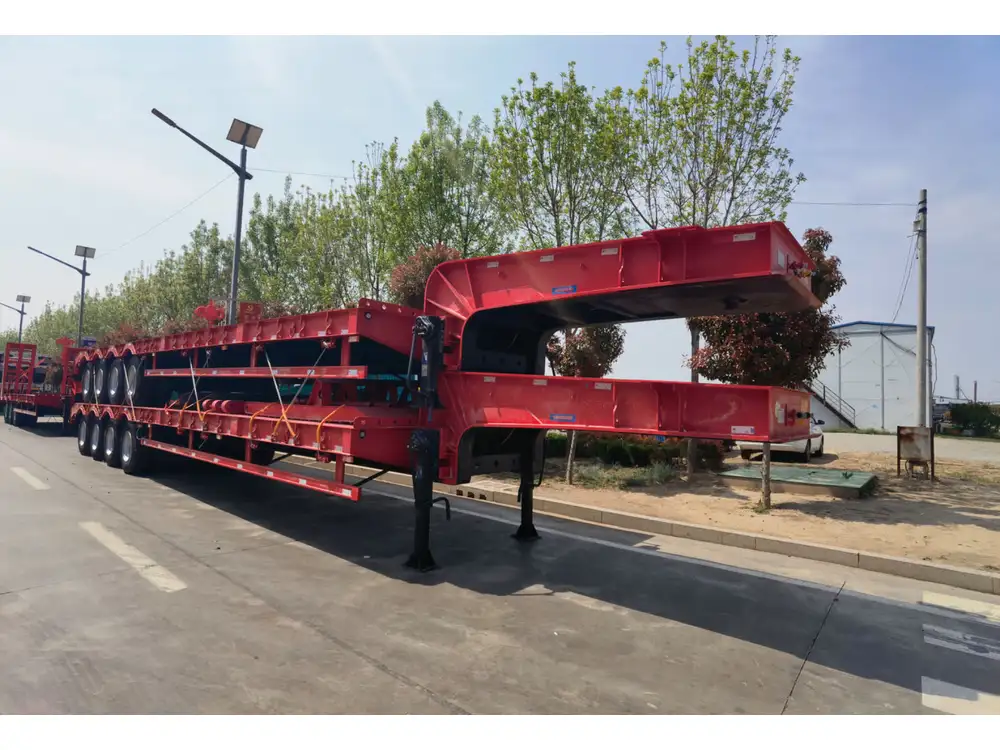In the competitive landscape of transportation and logistics, manufacturers and operators frequently grapple with the question of profitability. Among the myriad of vehicles on the road, semi-trailers stand out as vital cogs in the machinery of commerce. Thus, determining what semi-trailer makes the most money is not merely an academic inquiry; it is a practical question that can guide and transform business strategies.
Understanding the Semi-Trailer Market
Types of Semi-Trailers and Their Uses
The semi-trailer industry encompasses a broad spectrum of designs, each tailored to specific transportation needs. Here, we will explore the main types of semi-trailers, their applications, and their earning potential.
| Type of Semi-Trailer | Description | Common Applications | Revenue Potential |
|---|---|---|---|
| Flatbed | A trailer with no sides or roof, designed for easy loading and unloading. | Construction materials, large machinery | High, especially for specialized loads |
| Reefer | Temperature-controlled trailers designed to transport perishable goods. | Food, pharmaceuticals | Very high, due to demand for freshness |
| Dry Van | Enclosed trailers that protect cargo from elements. | General merchandise, retail goods | Moderate to high, depending on market |
| Tanker | Designed for transporting liquids. | Fuel, chemicals | High, but regulated |
| Lowboy | Trailers designed for transporting heavy equipment and machinery. | Heavy construction equipment | Extremely high, niche market |
| Beavertail | Flatbed trailers that have a slope at the rear for easier loading. | Machinery, vehicles | High, especially for wheeled equipment |

Revenue Factors Influencing Semi-Trailer Profitability
The profitability of a semi-trailer relies on several key factors:
Market Demand: Profitable semi-trailers are often those that meet urgent market demands. For instance, reefer trailers excel during the peak demand seasons for food and pharmaceuticals.
Cargo Flexibility: The versatility of cargo handling directly affects revenue potential. Flatbed trailers can carry diverse cargo types, boosting profitability per trip.
Maintenance Costs: The operational costs related to trailer maintenance can drastically influence profit margins. Efficient, well-maintained trailers yield better profits.
Regulatory Compliance: Adhering to regulations, especially in the tanker and reefer categories, can incur additional costs but may also open premium revenue streams due to compliance with safety and quality standards.
Geographic Location: Regions with thriving industries dictate semi-trailer demand. Urban settings with a high density of consumers typically translate to higher revenue potential for semi-trailer operations.
Analyzing Specific High-Potential Semi-Trailers
In this section, we delve into specific types of semi-trailers that are known for lucrative returns, presenting nuanced insights into their profitability.
Reefer Trailers: The Profit Powerhouse
Reefer trailers, designed for temperature-sensitive cargo, have a significant edge in profitability. Here’s why:
- Market Growth: Recent studies project increased demand for refrigerated transport as the global food supply chain expands.
- Value-Added Services: Operators can often charge a premium for maintaining a strict temperature control, making their services more appealing.
- High-Volume Contracts: Reefer trailers tend to secure long-term contracts with supermarkets and food distributors, ensuring steady cash flow.

Flatbed Trailers: The Versatile Contender
Flatbed trailers stand out for their versatility, leading to higher revenue potential through:
- Diverse Cargo Opportunities: They cater to a wide range of cargo types from construction materials to automotive parts, thereby maximizing utilization rates.
- Efficiency in Loading: With their open design, flatbeds allow for quicker loading and unloading, enabling faster turnaround times and more trips per day.
Lowboy Trailers: The Heavy Weight Champion
In niche markets, lowboy trailers excel in profitability by focusing on heavy equipment transport, which is characterized by:
- High Rates: Transporting construction and heavy machinery commands higher freight rates due to the specialized nature of the cargo.
- Limited Competition: Fewer operators are equipped to handle heavy loads, often giving lowboy operators the ability to dictate terms and prices.
Dry Van Trailers: The Steady Performer
While not as glamorous as reefer or lowboy trailers, dry vans provide steady income due to:
- Consistency in Demand: They serve essential roles in transporting consumer goods, providing a constant turnover of business.
- Lower Operational Risks: Dry vans typically incur fewer maintenance issues compared to specialized trailers that require advanced operational knowledge.

Key Considerations for Choosing a Semi-Trailer
When contemplating the optimal semi-trailer for profit generation, several considerations must be made:
1. Assessing Industry Trends
Keeping abreast of current trends in logistics, e-commerce, and global supply chains can aid in identifying which type of semi-trailer will yield the highest returns.
2. Understanding Your Niche
Different sectors may require specific types of trailers. Understand your operations and focus on catering to that niche effectively.

3. Balancing Cost and Profit Potential
Investing in higher-priced trailers like reefers or lowboys can yield significant returns, but operators must carefully analyze their initial costs against potential revenues.
Profit Maximization Strategies
1. Fleet Optimization
Optimizing a fleet means ensuring your semi-trailers are utilized to their full potential. Analyze your routes, cycles, and cargo types to create an efficient movement strategy that minimizes downtime and maximizes revenue.

2. Customer Relationships
Building strong relationships with clients ensures repeat business—a key ingredient for sustained profitability in the semi-trailer business. Regular communication, responsiveness, and understanding client needs cultivate loyalty.
3. Technological Integration
Leveraging technology such as GPS tracking, fleet management software, and telematics can enhance operational efficiency, minimize wastage, and ultimately lead to higher profitability margins.
4. Diversification of Services
Expanding the range of services associated with semi-trailer operations—such as logistics consulting or freight brokerage—can provide new revenue streams and add value for clients.

Conclusion: Positioning for Potential
We have dissected the various factors that influence the profitability of semi-trailers, from their type and market demand to operational strategies and technological advancements. Reefer trailers currently stand out as prime candidates for high profitability due to their ability to cater to the essential needs of transporting perishables. Flatbed, lowboy, and dry van trailers also present lucrative opportunities, particularly when strategic decisions revolve around market analysis and operational efficiency.
In this continually evolving industry landscape, the crux of profitability lies in adaptability, informed decision-making, and an unwavering commitment to meeting customer needs. Operators who harness these insights will not only determine what semi-trailer makes the most money but also establish a competitive edge that propels their businesses to new heights.



